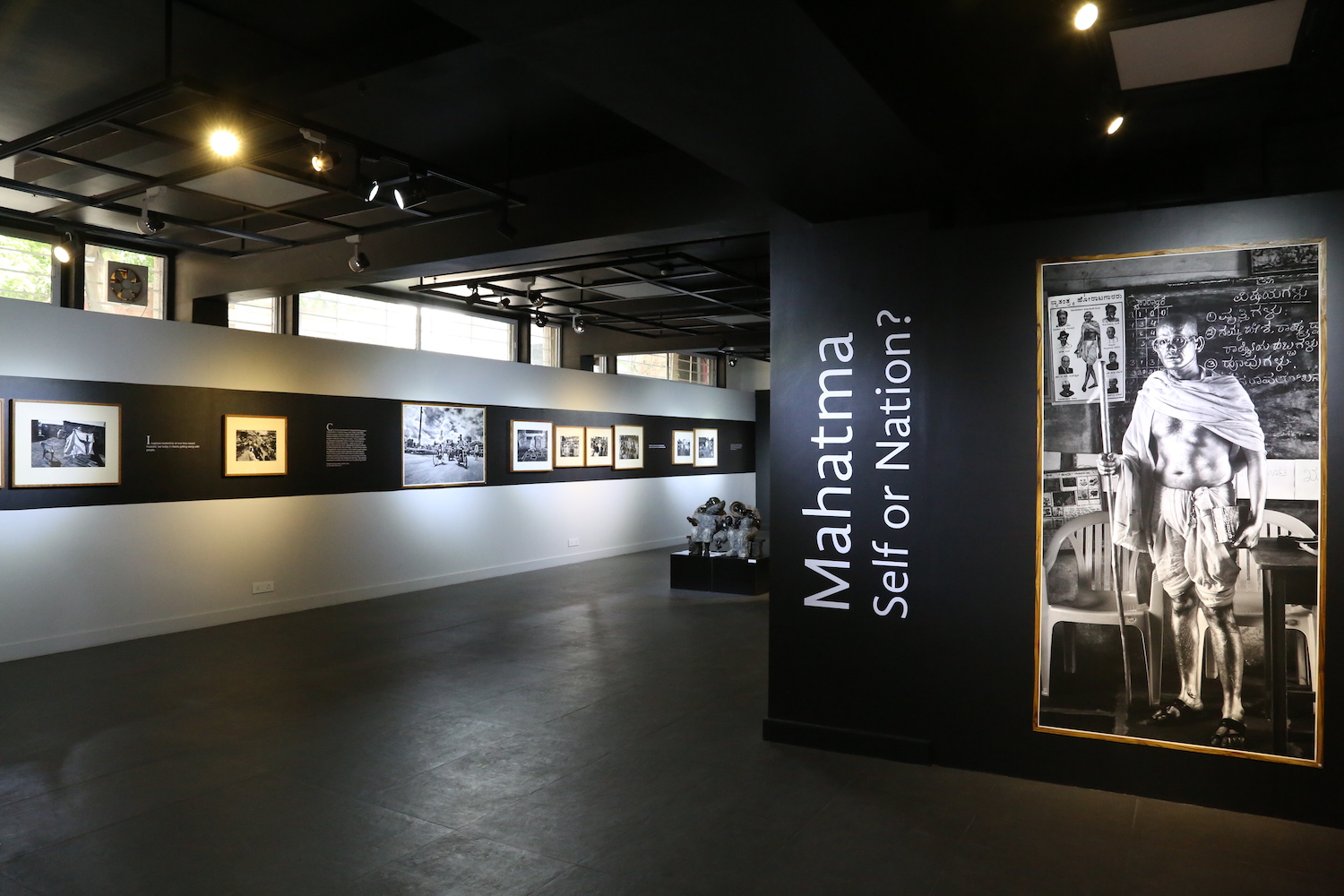PAST EXHIBITION
Mahatma: Self or Nation?
Art Heritage presents ‘Mahatma: Self or Nation?’, an exhibition of photographs, paintings, woodcuts, sculptures and video, that challenges the viewer to examine and analyze Gandhi’s legacy and philosophy as India enters a new chapter in her long and diverse history.
In his ‘Being Gandhi’ photo series (exhibited first at Art Heritage as ‘My Life is my Message’ (2013), and subsequently successfully shown across the world) Cop Shiva captures Bagadehalli Basavaraju, a small town schoolteacher and a staunch believer in Gandhian ideals as he ‘replicates’ the statue of Gandhi through his own person. Smearing himself with silver paint and then donning the appropriate costumes and props, Basavaraju’s effort is at ‘performing’ Gandhi as a physical presence. Walking through the town he halts at street corners and local schools, where crowds gather to listen to him imparting Gandhi’s teachings. Basavaraju feels it is important to reinforce Gandhi’s ideals not only through repeating his words, but recognizes that the sheer power of physical presence is an effective means of communicating Gandhi’s philosophy to his fellowmen.
Jagadeesh Tammineni’s ‘The Birth of a Nation’ woodcut series depicts Gandhi as a master craftsman working to assemble together a nation. With a gentle hand he puts the final touches on India’s most recognizable symbols – the cow, the tiger and the peacock. The inner workings of India are shown as complex, interconnected and requiring technological advancement, a spark – possibly to ignite change.
Ronney Sen’s photographs on the other hand, capture the spirit and strength of the kind of protest Gandhi propagated – Satyagraha – that has been adopted by people across the political spectrum. Sen’s panoramic, grayscale images, captured on his phone, were taken in September, 2014, when 1,50,000 protesters descended on Red Road, Kolkatta, in a heavy downpour to stand in solidarity with students of Jadavpur University, who were attacked by state forces for peacefully demonstrating for justice after a female student was sexually assaulted on campus.
Lastly, Suresh Punjabi’s depiction of the common person in his ‘Studio Suhang’ 1980s series, provides a window into a time of aspiration. Looked at closely, these seemingly innocuous photos, reveal the need for an assertion of identity by those photographed. Using props and costumes men, women and entire families seem eager to appear upwardly mobile, making a statement through their poses and gestures that mimic popular film stars.
Vidya Sagar Singh’s light sculptures provide a physical form to Gandhi’s ideals. Singh’s internally lit ‘tree of life’ sculpture, a new medium that he is developing, embodies enlightenment and hope, whereas the multi-faced bronze bull by Arun Pandit, poised to charge, is a manifestation of a nation’s energy and inner strength.
In addition to the artworks, viewers can enjoy 4 episodes of the Gandhi-Broomfield trial (mid-1920s) from the critically acclaimed TV mini-series, ‘Raj Se Swaraj’, directed by Amal Allana, that aired on Doorsarshan in the mid-1980s.
Artists
Cop Shiva, Jagdeesh Tammineni, Suresh Punjabi, Vidyasagar Singh, Ronny Sen
